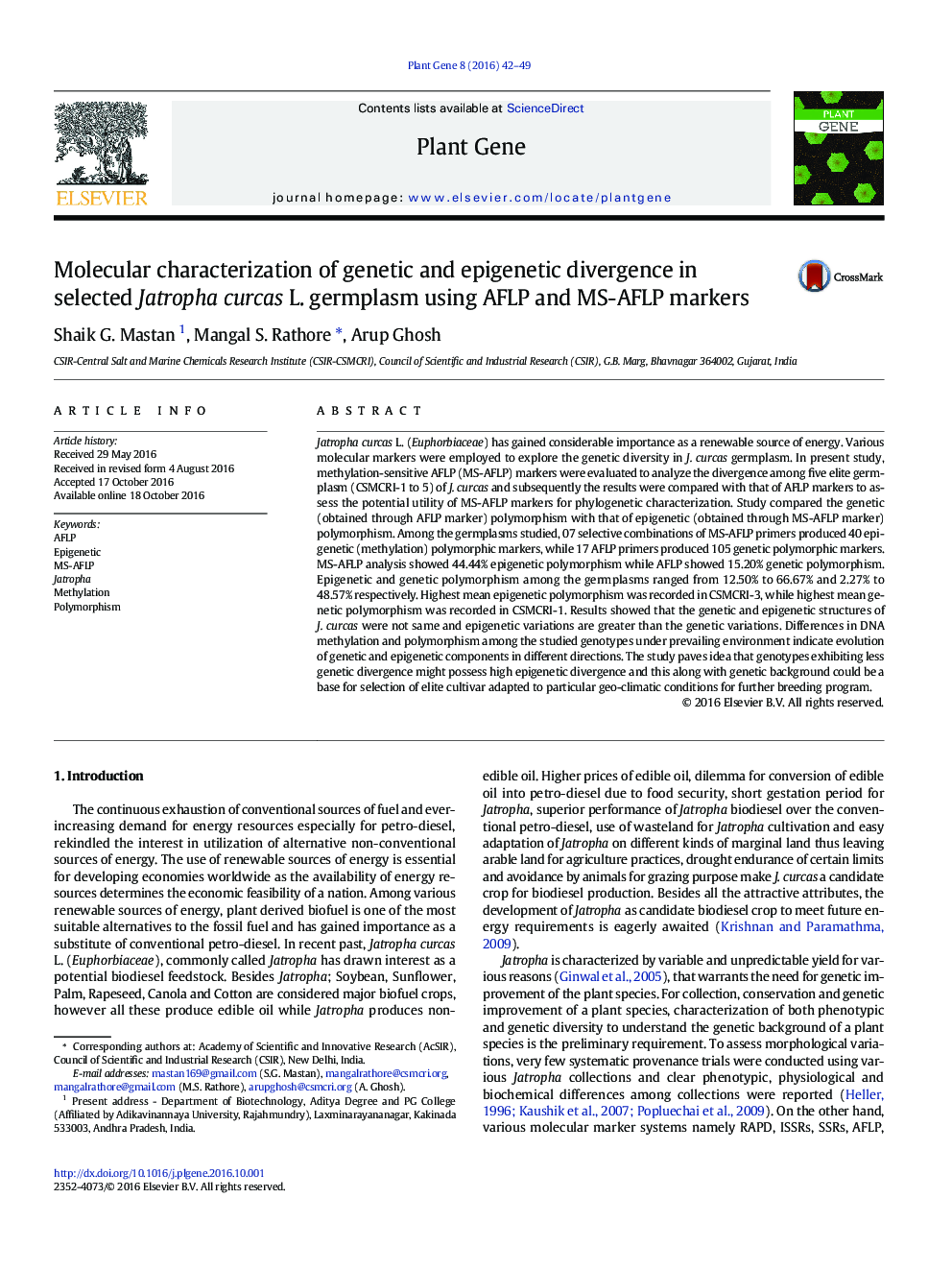| Article ID | Journal | Published Year | Pages | File Type |
|---|---|---|---|---|
| 5590992 | Plant Gene | 2016 | 8 Pages |
Jatropha curcas L. (Euphorbiaceae) has gained considerable importance as a renewable source of energy. Various molecular markers were employed to explore the genetic diversity in J. curcas germplasm. In present study, methylation-sensitive AFLP (MS-AFLP) markers were evaluated to analyze the divergence among five elite germplasm (CSMCRI-1 to 5) of J. curcas and subsequently the results were compared with that of AFLP markers to assess the potential utility of MS-AFLP markers for phylogenetic characterization. Study compared the genetic (obtained through AFLP marker) polymorphism with that of epigenetic (obtained through MS-AFLP marker) polymorphism. Among the germplasms studied, 07 selective combinations of MS-AFLP primers produced 40 epigenetic (methylation) polymorphic markers, while 17 AFLP primers produced 105 genetic polymorphic markers. MS-AFLP analysis showed 44.44% epigenetic polymorphism while AFLP showed 15.20% genetic polymorphism. Epigenetic and genetic polymorphism among the germplasms ranged from 12.50% to 66.67% and 2.27% to 48.57% respectively. Highest mean epigenetic polymorphism was recorded in CSMCRI-3, while highest mean genetic polymorphism was recorded in CSMCRI-1. Results showed that the genetic and epigenetic structures of J. curcas were not same and epigenetic variations are greater than the genetic variations. Differences in DNA methylation and polymorphism among the studied genotypes under prevailing environment indicate evolution of genetic and epigenetic components in different directions. The study paves idea that genotypes exhibiting less genetic divergence might possess high epigenetic divergence and this along with genetic background could be a base for selection of elite cultivar adapted to particular geo-climatic conditions for further breeding program.
